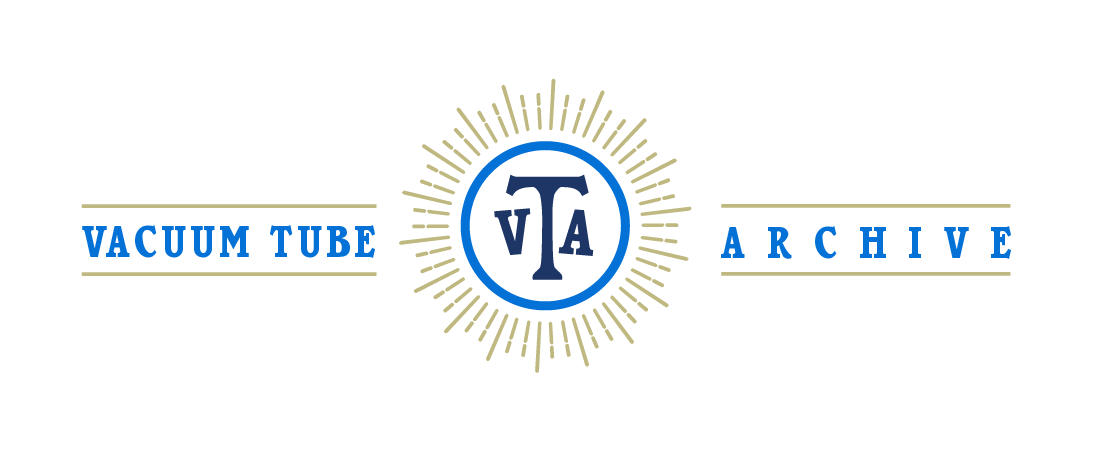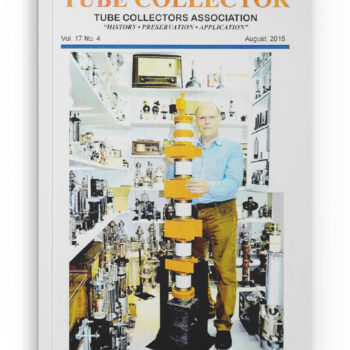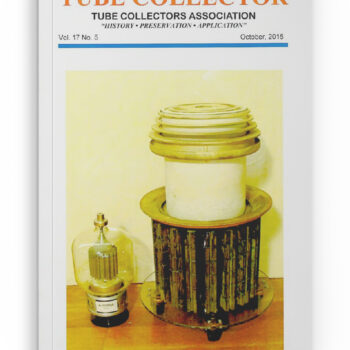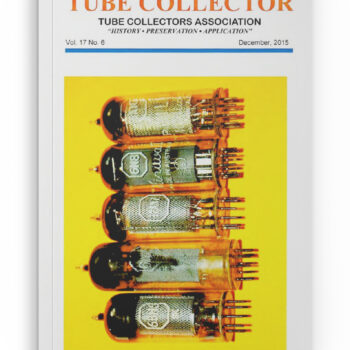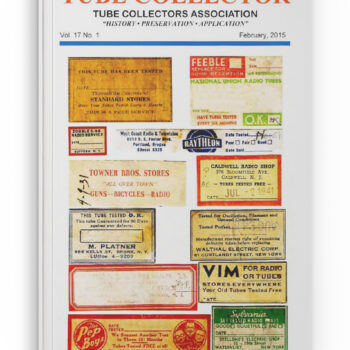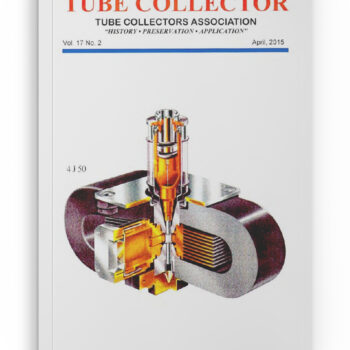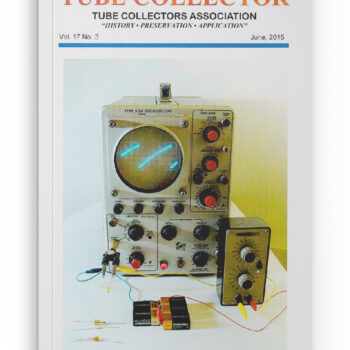Udo Radtke, “power-collector,” with his YK-1001 klystron (for UHF television, 10 kilowatts) in an elegantly welded-up display stand. For a fine cutaway image of this 180- pound tube, complete with its resonant cavities, see www.tubecollection.de/ura/YK-1001.htm. “He who dies with the biggest tube wins.” Photo: Udo Radtke. In this issue
Vol. 17, No. 5
An Eimac 8351/4CV100,000 vapor-cooled tetrode, of the type used in one of the Collins 250-kW transmitters, now removed, at the Voice of America transmitting site outside Delano, California. It is accompanied by its much smaller vcousin, a mere 4-1000. In this issue
Vol. 17, No. 6
A family of Philips Innoval tubes – left to right, 6BH5, 6M5, 12AN7, 6N8, and 6AN7. Photo: Daniel Stocks. In this issue
Vol. 17, No. 1
A set of classic tube-test labels. See the editorial pages for more details. In this issue
Vol. 17, No. 2
In honor of the coverage of cavity-magnetron history in this issue, here ia a classic: the 4J50. This device, with its built-in magnet, was designed by Bell Labs for manufacture by Western Electric during WWII, but successful enough to be offered by at least eight other makers in the US, Britian, the Netherlands, France and...
Vol. 17, No. 3
“First siliicon in Silicon Valley”. A PNPN diode, 1958 production from the ill-fated Schockley Transistor Coroporation, working merrily in a simple relazation oscilator. The diode is the tubular gold-colored device in the clips at lower left. The pulse rate shown is 800Hz, but the falltime is so crisp as to put a vigorous whine into...
